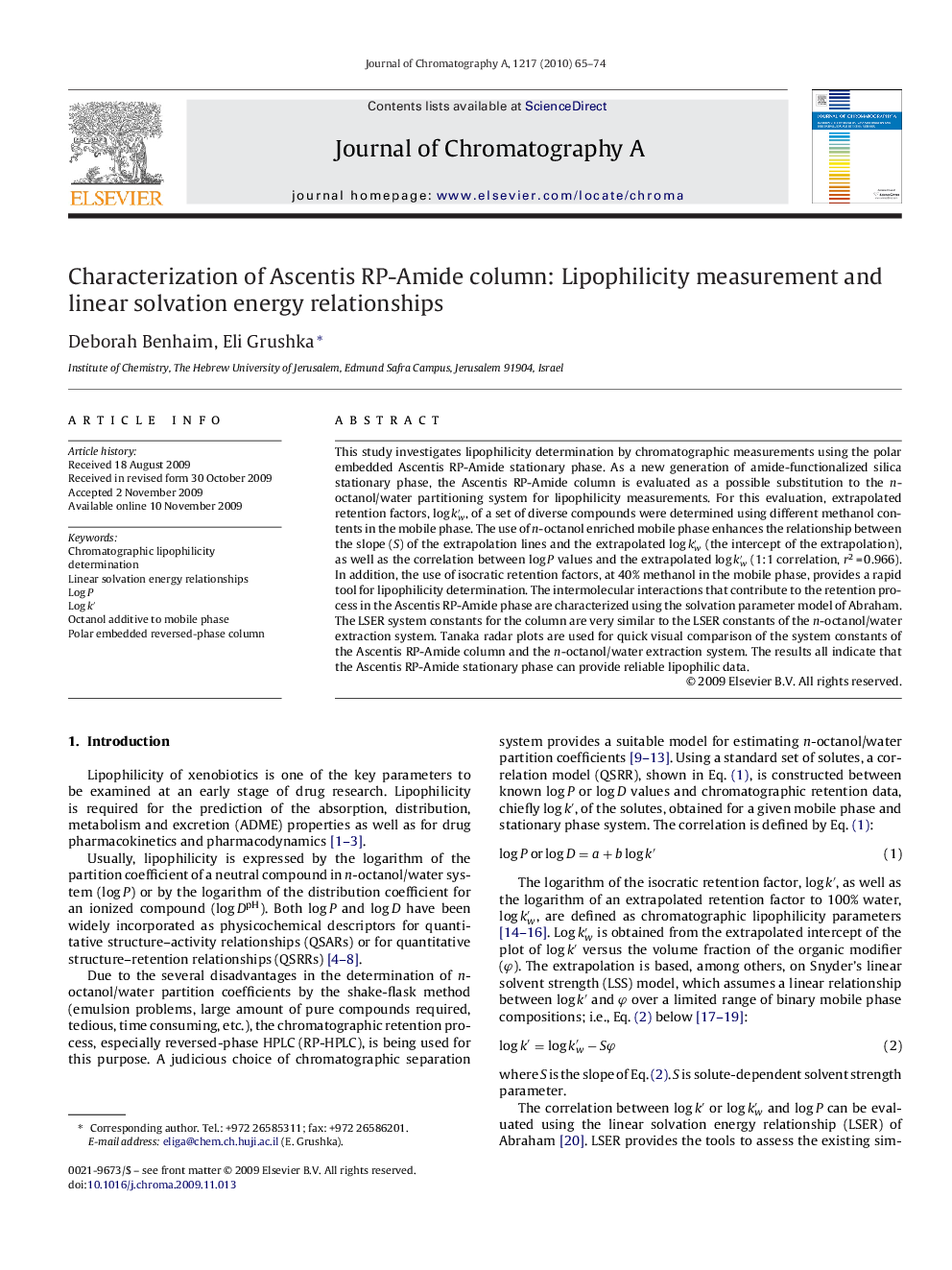| Article ID | Journal | Published Year | Pages | File Type |
|---|---|---|---|---|
| 1204372 | Journal of Chromatography A | 2010 | 10 Pages |
Abstract
This study investigates lipophilicity determination by chromatographic measurements using the polar embedded Ascentis RP-Amide stationary phase. As a new generation of amide-functionalized silica stationary phase, the Ascentis RP-Amide column is evaluated as a possible substitution to the n-octanol/water partitioning system for lipophilicity measurements. For this evaluation, extrapolated retention factors, logkâ²w, of a set of diverse compounds were determined using different methanol contents in the mobile phase. The use of n-octanol enriched mobile phase enhances the relationship between the slope (S) of the extrapolation lines and the extrapolated logkâ²w (the intercept of the extrapolation), as well as the correlation between log P values and the extrapolated logkâ²w (1:1 correlation, r2 = 0.966). In addition, the use of isocratic retention factors, at 40% methanol in the mobile phase, provides a rapid tool for lipophilicity determination. The intermolecular interactions that contribute to the retention process in the Ascentis RP-Amide phase are characterized using the solvation parameter model of Abraham. The LSER system constants for the column are very similar to the LSER constants of the n-octanol/water extraction system. Tanaka radar plots are used for quick visual comparison of the system constants of the Ascentis RP-Amide column and the n-octanol/water extraction system. The results all indicate that the Ascentis RP-Amide stationary phase can provide reliable lipophilic data.
Related Topics
Physical Sciences and Engineering
Chemistry
Analytical Chemistry
Authors
Deborah Benhaim, Eli Grushka,
